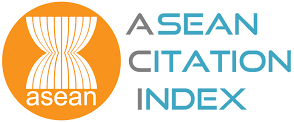The study of redistribution in residual stresses during fatigue crack growth
DOI:
https://doi.org/10.15282/jmes.15.4.2021.09.0675Keywords:
Fatigue crack growth, J-Integral, residual stress, relaxationAbstract
Numerical and experimental study was conducted on fatigue crack growth (FCG) of metallic components to investigate the redistribution of mechanical residual stresses during FCG. To this end, the compact tension specimens of an aluminium alloy were used. In addition, mechanical residual stresses were introduced near the crack tip by applying compressive and tensile loads, followed by visually observing the side-surface of the specimens to estimate the crack growth length. In the numerical simulation, cyclic J-integral was used as the crack growth fracture parameter and a good agreement was observed between the numerical and experimental results. The results of the finite element method demonstrated a clear redistribution of mechanical residual stresses during FCG. After a few cycles, the residual stress field around the crack tip reached a lower magnitude value confined in a smaller zone, although this zone was stable during the remaining fatigue process. Finally, present study evaluated the effect of stress ratio, load amplitude, and initial residual stresses level on the redistribution of residual stresses. It was observed that the residual stresses are mainly released during the first steps of fatigue loading.
References
Z. Barsoum and I. Barsoum, “Residual stress effects on fatigue life of welded structures using LEFM,” Eng. Fail. Anal., vol. 16, no. 1, pp. 449–467, 2009, doi: 10.1016/j.engfailanal.2008.06.017.
W. V. Vaidya, P. Staron, and M. Horstmann, “Fatigue crack propagation into the residual stress field along and perpendicular to laser beam butt-weld in aluminium alloy AA6056,” Fatigue Fract. Eng. Mater. Struct., vol. 35, no. 5, pp. 399–411, 2012, doi: 10.1111/j.1460-2695.2011.01631.x.
J. E. Larue and S. R. Daniewicz, “Predicting the effect of residual stress on fatigue crack growth,” Int. J. Fatigue, vol. 29, no. 3, pp. 508–515, 2007, doi: 10.1016/j.ijfatigue.2006.05.008.
G. Servetti and X. Zhang, “Predicting fatigue crack growth rate in a welded butt joint: The role of effective R ratio in accounting for residual stress effect,” Eng. Fract. Mech., vol. 76, no. 11, pp. 1589–1602, 2009, [Online]. Available: http://dx.doi.org/10.1016/j.engfracmech.2009.02.015.
T. Ghidini and C. D. Donne, “Fatigue crack propagation assessment based on residual stresses obtained through cut-compliance technique,” Fatigue Fract. Eng. Mater. Struct., vol. 30, no. 3, pp. 214–222, 2007, doi: 10.1111/j.1460-2695.2006.01059.x.
G. Bussu and P. E. . Irving, “The role of residual stress and heat affected zone properties on fatigue crack propagation in friction stir welded 2024-T351 aluminum joints,” Int. J. Fatigue, vol. 25, no. 1, pp. 77–88, 2003, doi: 10.1016/S0142-1123(02)00038-5.
A. Jacob, A. Mehmanparast, R. D’Urzo, and J. Kelleher, “Experimental and numerical investigation of residual stress effects on fatigue crack growth behaviour of S355 steel weldments,” Int. J. Fatigue, vol. 128, p. 105196, 2019, doi: 10.1016/j.ijfatigue.2019.105196.
A. Parker, “Stress intensity factors, crack profiles, and fatigue crack growth rates in residual stress fields,” in Residual Stress Effects in Fatigue, ASTM International, 1982, pp. 13–19.
W. Elber, “Fatigue crack closure under cyclic tension,” Eng. Fract. Mech., vol. 2, no. 1, pp. 37–45, 1970, doi: 10.1016/0013-7944(70)90028-7.
C. D. M. Liljedahl, M. L. Tan, O. Zanellato, S. Ganguly, M. E. Fitzpatrick, and L. Edwards, “Evolution of residual stresses with fatigue loading and subsequent crack growth in a welded aluminium alloy middle tension specimen,” Eng. Fract. Mech., vol. 75, no. 13, pp. 3881–3894, 2008, doi: https://doi.org/10.1016/j.engfracmech.2008.02.005.
G. H. Farrahi, G. H. Majzoobi, F. Hosseinzadeh, and S. M. Harati, “Experimental evaluation of the effect of residual stress field on crack growth behaviour in C(T) specimen,” Eng. Fract. Mech., vol. 73, no. 13, pp. 1772–1782, 2006, doi: 10.1016/j.engfracmech.2006.03.004.
Z. Semari et al., “Effect of residual stresses induced by cold expansion on the crack growth in 6082 aluminum alloy,” Eng. Fract. Mech., vol. 99, pp. 159–168, 2013, doi: 10.1016/j.engfracmech.2012.12.003.
M. H. Gozin and M. Aghaie-Khafri, “2D and 3D finite element analysis of crack growth under compressive residual stress field,” Int. J. Solids Struct., vol. 49, no. 23–24, pp. 3316–3322, 2012, doi: 10.1016/j.ijsolstr.2012.07.014.
X. D. Ren et al., “The effects of residual stress on fatigue behavior and crack propagation from laser shock processing-worked hole,” Mater. Des., vol. 44, pp. 149–154, 2013, doi: 10.1016/j.matdes.2012.07.024.
O. S. Zaroog, A. Ali, B. B. Sahari, and R. Zahari, “Modeling of residual stress relaxation of fatigue in 2024-T351 aluminium alloy,” Int. J. Fatigue, vol. 33, no. 2, pp. 279–285, 2011, doi: 10.1016/j.ijfatigue.2010.08.012.
L. Zhu and M. P. Jia, “A new approach for the influence of residual stress on fatigue crack propagation,” Results Phys., vol. 7, pp. 2204–2212, 2017, doi: 10.1016/j.rinp.2017.06.039.
H. J. Yi and Y. J. Lee, “Numerical analysis of welding residual stress relaxation in high-strength multilayer weldment under fatigue loads,” Metall. Mater. Trans. B Process Metall. Mater. Process. Sci., vol. 48, no. 4, pp. 2167–2175, 2017, doi: 10.1007/s11663-017-0958-0.
C. H. Lee, K. H. Chang, and V. N. Van Do, “Finite element modeling of residual stress relaxation in steel butt welds under cyclic loading,” Eng. Struct., vol. 103, pp. 63–71, 2015, doi: 10.1016/j.engstruct.2015.09.001.
X. Xie, W. Jiang, Y. Luo, S. Xu, J. M. Gong, and S. T. Tu, “A model to predict the relaxation of weld residual stress by cyclic load: Experimental and finite element modeling,” Int. J. Fatigue, vol. 95, pp. 293–301, 2017, doi: 10.1016/j.ijfatigue.2016.11.011.
M. Farajian-Sohi, T. Nitschke-Pagel, and K. Dilger, “Residual stress relaxation of quasi-statically and cyclically-loaded steel welds,” Weld. World, vol. 54, no. 1–2, pp. 49–60, 2010, doi: 10.1007/BF03263484.
V. Dattoma, M. De Giorgi, and R. Nobile, “Numerical evaluation of residual stress relaxation by cyclic load,” J. Strain Anal. Eng. Des., vol. 39, no. 6, pp. 663–672, 2004, doi: 10.1243/0309324042379248.
W. Jiang, Y. Yu, W. Zhang, C. Xiao, and W. Woo, “Residual stress and stress fields change around fatigue crack tip: Neutron diffraction measurement and finite element modeling,” Int. J. Press. Vessel. Pip., vol. 179, no. August 2019, p. 104024, 2020, doi: 10.1016/j.ijpvp.2019.104024.
T. Yonezawa, H. Shimanuki, and T. Mori, “Influence of cyclic loading on the relaxation behavior of compressive residual stress induced by UIT,” Weld. World, vol. 64, no. 1, pp. 171–178, 2020, doi: 10.1007/s40194-019-00821-1.
W. Zhong, Y. Ding, Y. Song, F. Geng, and Z. Wang, “Residual stress relaxation of drwds in osds under constant/variable amplitude cyclic loading,” Appl. Sci., vol. 11, no. 1, pp. 1–23, 2021, doi: 10.3390/app11010253.
Y. G. Dehkordi, A. P. Anaraki, and A. R. Shahani, “Comparative study of the effective parameters on residual stress relaxation in welded aluminum plates under cyclic loading,” Mech. Ind., vol. 21, no. 5, 2020, doi: 10.1051/meca/2020061.
“Abaqus, Dassault Systemes Simulia Corp., Providence, RI, USA.” Dassault Systemes Simulia Corp, Providence; RI, USA, 2014.
A. Mirzaee-Sisan, “The influence of prior thermal and mechanical loading on fracture,” University of Bristol, UK, 2005.
Assessment of the Integrity of Structures Containing Deffects, 4th ed. Gloucester: British Energy, 2001.
J. Wang and A. Mirzaee-Sisan, “The effect of plasticity on residual stress generation and redistribution in offshore pipelines,” Int. J. Press. Vessel. Pip., vol. 159, pp. 101–110, 2018, doi: 10.1016/j.ijpvp.2017.11.011.
M. Turski, “High temperature creep cavitation cracking under the action of residual stress in 316H stainless steel,” University of Manchester, UK, 2004.
J. R. Rice, “A path independent integral and the approximate analysis of strain concentration by notches and cracks,” J. Appl. Mech., vol. 35, no. 2, pp. 379–386, 1968, doi: 10.1115/1.3601206.
Y. Lei, N. . O’ Dowd, and G. . Webster, “Fracture mechanics analysis of a crack in a residual stress field,” Int. J. Fract., vol. 106, no. 3, pp. 195–216, 2000, doi: 10.1023/A:1026574400858.
ASTM-E1820-09, “Standard Test Method for Measurement of Fracture Toughness,” ASTM Int., 2009, doi: 10.1520/E1820-09.2.
N. E. Dowling and J. A. Begley, “Fatigue crack growth during gross plasticity and the J-Integral,” in Mechanics of Crack Growth, J. R. Rice and P. C. Paris, Eds. West Conshohocken, PA: ASTM International, 1976, pp. 82–103.
ASTM Standard E647 − 13a, “Standard Test Method for Measurement of Fatigue Crack Growth Rates,” Am. Soc. Test. Mater., pp. 1–50, 2014, doi: 10.1520/E0647-13A.2.
M. R. Wenman, A. J. Price, A. Steuwer, P. R. Chard-Tuckey, and A. Crocombe, “Modelling and experimental characterisation of a residual stress field in a ferritic compact tension specimen,” Int. J. Press. Vessel. Pip., vol. 86, no. 12, pp. 830–837, Dec. 2009, doi: 10.1016/j.ijpvp.2009.10.006.
S. K. Paul, “Numerical models to determine the effect of soft and hard inclusions on different plastic zones of a fatigue crack in a C(T) specimen,” Eng. Fract. Mech., vol. 159, pp. 90–97, 2016, doi: 10.1016/j.engfracmech.2016.03.028.
S. K. Paul, “Effect of micro-cavities on different plastic zones at the fatigue crack tip of a compact tension specimen,” Eng. Fract. Mech., vol. 158, pp. 13–22, 2016, doi: 10.1016/j.engfracmech.2016.02.041.
S. K. Paul, “Numerical models of plastic zones and associated deformations for a stationary crack in a C(T) specimen loaded at different R-ratios,” Theor. Appl. Fract. Mech., vol. 84, pp. 183–191, 2016, doi: 10.1016/j.tafmec.2015.10.008.
T. L. Anderson, Fracture Mechanics: Fundamentals and Applications, Third Edit. CRC Press, 2005.
A. J. McEvily, S. Ishihara, and Y. Mutoh, “On the number of overload-induced delay cycles as a function of thickness,” Int. J. Fatigue, vol. 26, no. 12, pp. 1311–1319, 2004, doi: 10.1016/j.ijfatigue.2004.04.008.
P. F. P. De Matos and D. Nowell, “Numerical simulation of plasticity-induced fatigue crack closure with emphasis on the crack growth scheme: 2D and 3D analyses,” Eng. Fract. Mech., vol. 75, no. 8, pp. 2087–2114, 2008, doi: 10.1016/j.engfracmech.2007.10.017.
K. Solanki, S. R. Daniewicz, and J. C. Newman, “Finite element modeling of plasticity-induced crack closure with emphasis on geometry and mesh refinement effects,” Eng. Fract. Mech., vol. 70, no. 12, pp. 1475–1489, 2003, doi: https://doi.org/10.1016/S0013-7944(02)00168-6.
Downloads
Published
How to Cite
Issue
Section
License
Copyright (c) 2021 Universiti Malaysia Pahang Publishing

This work is licensed under a Creative Commons Attribution 4.0 International License.






